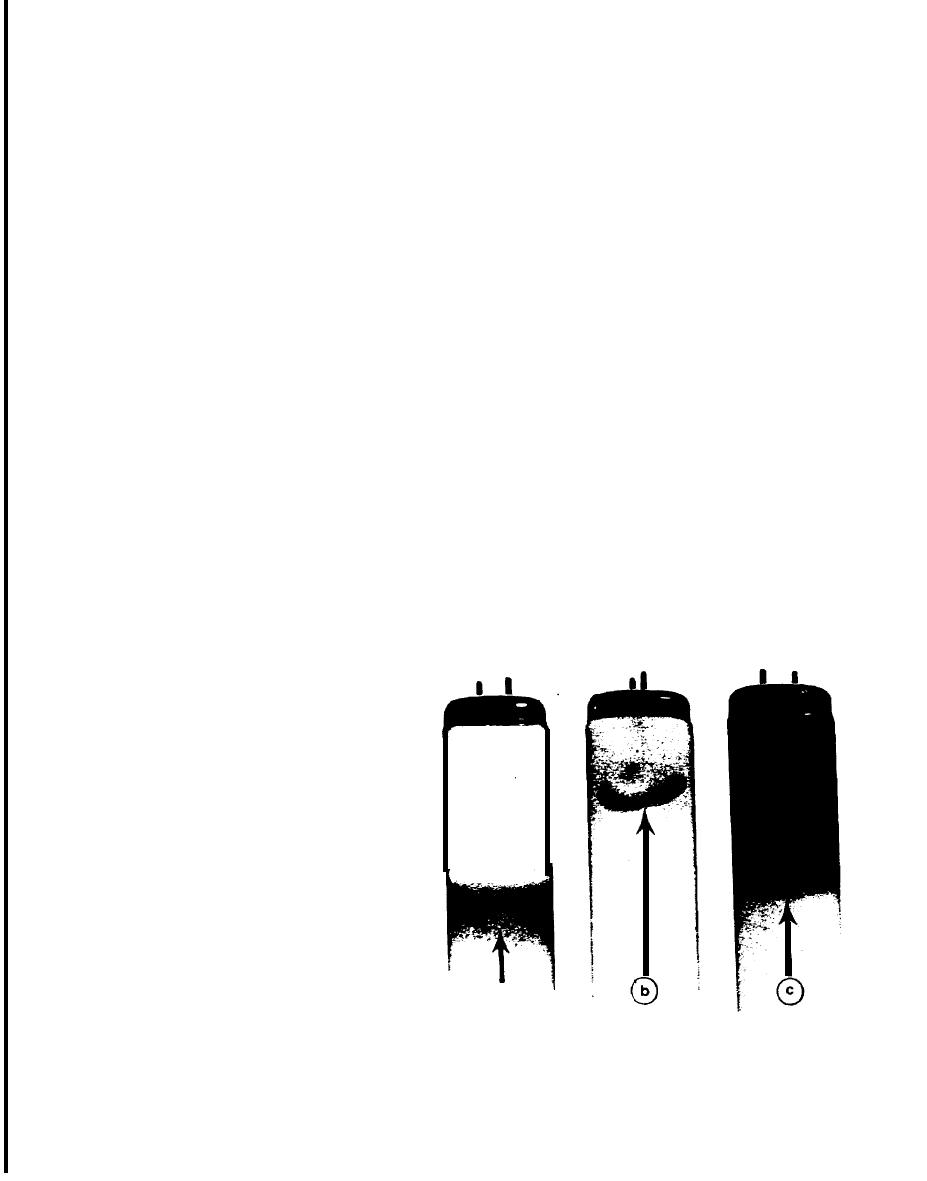

Custom Search
|
|

|
||
 TM 5-683/NAVFAC MO-116/AFJMAN 32-1083
faces that cannot be adequately cleaned and pol-
9-5. Cleaning.
ished should be replaced.
The cleaning schedule should be coupled with
relamping (spot/group schedule to minimize labor
9-6. Relamping.
costs). The cost of cleaning versus replacement
The longer a lamp remains in service, the less light
should be carefully evaluated. It is well-known that
it produces. The different types of lamps-filament,
dirt absorbs and masks light. The progressive de-
fluorescent or high intensity discharge-depreciate
crease of light caused by accumulating dirt renders
at different rates. Since their life expectancy is also
periodic cleaning of lighting equipment-lamps, re-
different, replacement intervals will vary. The two
flectors and lens--a necessity. The frequency of
general relamping procedures are spot relamping
cleaning depends entirely upon local conditions.
and group relamping.
Fixtures in air-conditioned and air-filtered rooms
a. Spot relamping. Spot relamping is the replace-
may require cleaning only once a year. But in an
ment of individual lamps as they fail. Lamps that
atmosphere which is heavy with dust and fumes,
are blackened or discolored should also be replaced
cleaning every few weeks may be necessary. The
even if they are still b urning because this discolora-
cleaning intervals for a particular installation
tion indicates that the lamp will soon fail. Fluores-
should be determined by light meter readings after
cent lamps should be replaced as soon as they begin
the initial cleaning. When subsequent foot-candle
to flicker, or when the ends of the tube adjacent to
readings have dropped 15-20 percent, the fixtures
the base blacken (fig 9-3).
should be cleaned again. Readings should be made
b. Group relamping. Group relamping is most ap-
with the light meter at the working surface with the
plicable to fluorescent lighting. When relamping, it is
meter reader in the position of the operator or per-
economical to wash the fixtures. It is also advanta-
geous to inspect the sockets, hangers, reflectors and
son using the working surface. Lighting equipment
lens for broken glass, loose mountings, etc. Refer to
should be washed, not just wiped with a dry cloth.
the lamp manufacturer for recommended replace-
Washing reclaims five to ten percent more light
ment intervals and relamping procedures. It should
then dry wiping and reduces the possibility of mar-
also be noted that replacement lamps must be of the
ring or scratching the reflecting surfaces of the fix-
same type, color, wattage and voltage as those being
tures. Glassware, reflectors and diffusing louvers
replaced. The following procedures apply:
that can be removed should be cleaned as follows:
a. Immerse in the washing solution. Do not im-
merse lamp base or electrical connections in the
cleaning solution. Scrub with a soft brush or sponge.
When incrustation is not removed by scrubbing, use
No. 0 steel wool to remove dirt film.
b. Rinse in warm clear water and dry with a
clean cloth. Walls, ceilings and surroundings are an
important part of the overall illumination system
since they redirect light to the working area. The
most efficient lighting system is obtained when the
fixtures are new and when the walls, ceilings, floors
and furnishings of the room are clean and colored
with a high reflectance color. A lighting mainte-
nance program must therefore include cleaning and
painting of the walls and ceilings in addition to the
fixture cleaning schedule. Glassware, reflectors and
diffusing louvers that cannot be removed should be
cleaned as follows:
(1) Wipe with a moist cloth or sponge. When
0
incrustation is not removed by sponging, use No. 0
a
steel wool to remove dirt film. Care should be taken
to ensure that shreds of steel wool do not touch the
pin contacts or get into the lamp socket.
Figure 9-3. Trouble-Shooting Fluorescent Lighting: a) Grey or
(2) Wipe off excess moisture with a clean cloth.
brown bands 1"--2" from base are normal and do not affect useful
Clean fixture holders and stem hangers with a
life, b) Dark spots caused by condensed Mercury. Usually disap-
moist sponge or cloth and wipe dry. Enameled,
pear after lamp warms up, c) Large blackened areas at ends mean
chrome, aluminum or silver-plated reflecting sur-
lamp is at end of useful life.
9-4
|
 |
|
 |
||